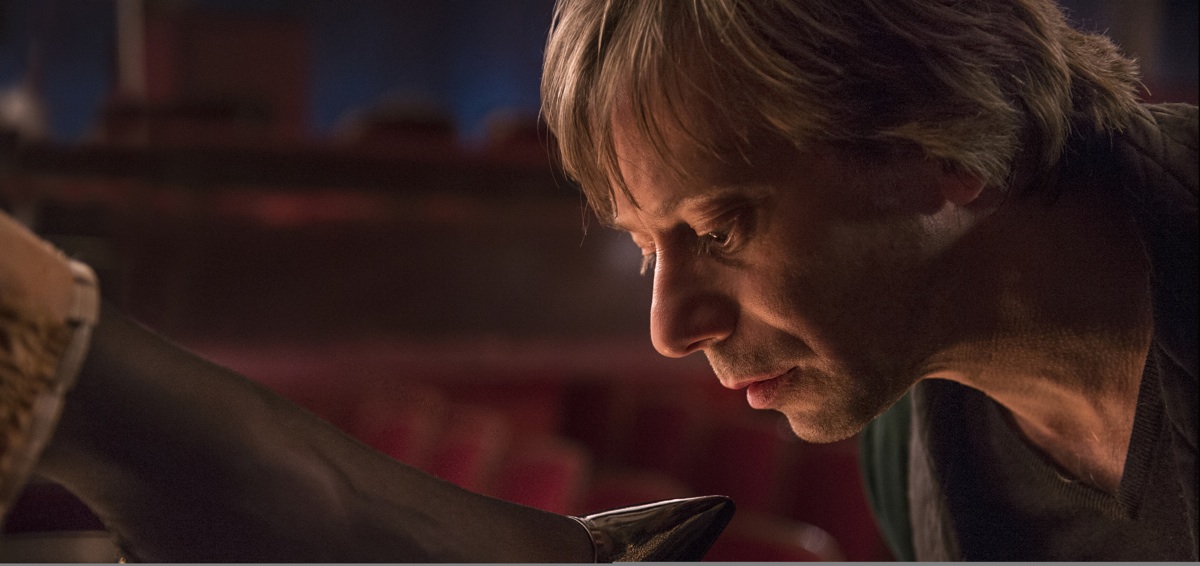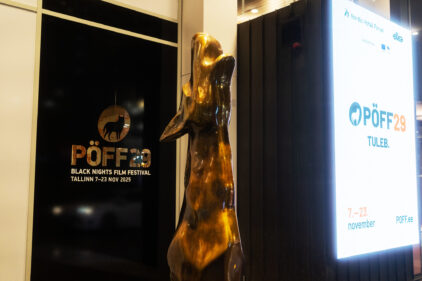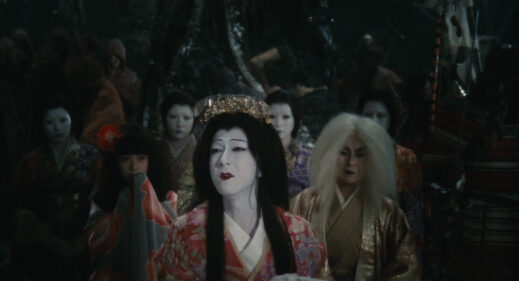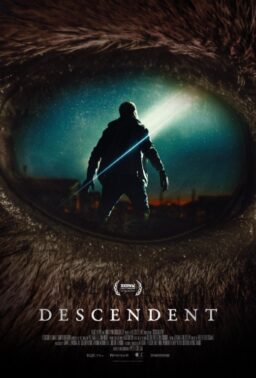Based on David Ives’ play, which reworked Leopold von Sacher-Masoch’s cult 1870 novel into a mind-bending erotic two-hander, “Venus in Furs” is the latest entry in Roman Polanski’s ongoing cycle of single-locale power plays. The film is similar both to “Knife in the Water” (1961) and “Carnage” (2011), in that it involves characters struggling for domination in a confined space. This time it’s mainly sex, not class or status, that serves as the battlefield. It’s so elegant and effortlessly accomplished that “Venus in Furs” served as a perfect closing movie of this year’s Main Competition at Cannes.
The film’s premise is deceptively simple: a frustrated theater director meets a determined dynamo of an actress, who may be the perfect choice for the main role in his eponymous play. Vanda not only shares her first name with the character she’s auditioning to play, but seems to be an actual incarnation of Masoch’s fantasy of a demure woman turned into a dominatrix. Thomas starts out as annoyed with the gum-chewing, insult-spurting Vanda, only to become more and more fascinated with her ever-shifting erotic aura. Think Howard Hawks’ “Twentieth Century” plus masochistic role-playing and you will get the idea.
With its hall-of-mirrors structure, the film is a two-hander about directing a two-hander, with the text of the play-within-the-film slowly taking over and making the characters turn into their imagined stage selves. As if that didn’t sound cerebral already, Polanski complicates matters with pungent casting choices all his own: his wife, Emmanuelle Seigner, plays Vanda, and Mathieu Amalric — who bears striking resemblance to younger Polanski — plays Thomas as a narcissistic control freak (as well as the piece’s ultimate patsy).
The film is set entirely in an empty Parisian theater, singled out from adjacent buildings by an ominous camera glide in the very first shot, set to playfully spooky hurdy-gurdy music. A thunder storm is approaching, and so is the chaos of sexual confusion. The perverse antics of Vanda and Thomas take place on a stage cluttered with decoration from a previous show: a musical version of John Ford’s “Stagecoach,” which makes sense both as a play on words and a reference to the western as such, a genre that has always celebrated male virility and resourcefulness.
Among other things, the film plays a bit like a catalog of Polanski’s signature obsessions, with a special nod to the transsexual panic of male characters in “Cul-de-Sac” and “The Tenant.” Thomas’s initial reluctance to play out his fantasies melts away quickly, and the great chemistry between two performers really turns the whole film into a dreamy, funny and scary meditation on how sex and power make the ultimate bedfellows. Even though the concept of Ives’ play is too smart for its own good (it all but congratulates itself on the convoluted flourishes of intellectual peek-a-boo), Polanski blurs out its limitations, allowing both Amalric and Seigner to delight in playing off each other.
Just like “Rosemary’s Baby” ended with the camera moving away from the Dakota building and leaving the main character to herself after her demons literally came into her world, “Venus in Furs” closes with a gliding shot moving away from the theater, with Amalric changed beyond recognition — unfamiliar to everyone including himself. “Venus in Furs” is a perverse funhouse of a movie, in which identities get pulverized and sexual power play never ceases: “Dutchman” by way of “Vanya on 42nd Street.” It’s the work of a master dabbling in small pieces rather than epic ones, and putting all touches into perfect place without so much as glancing at his canvas.












